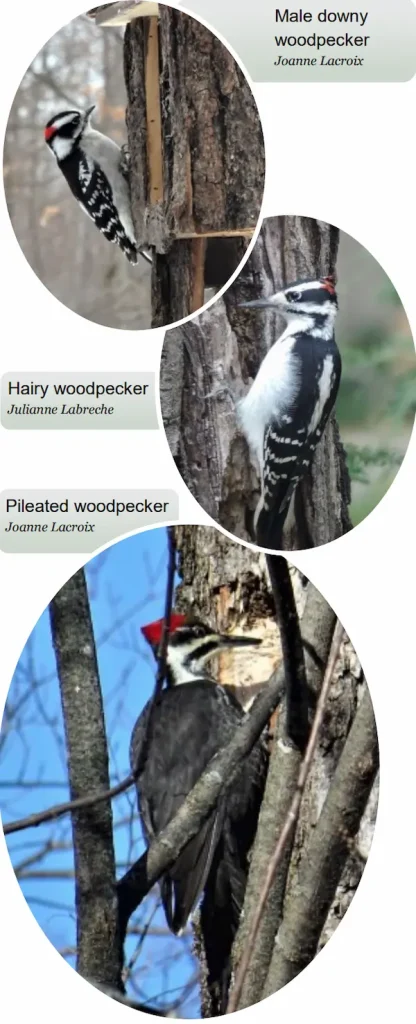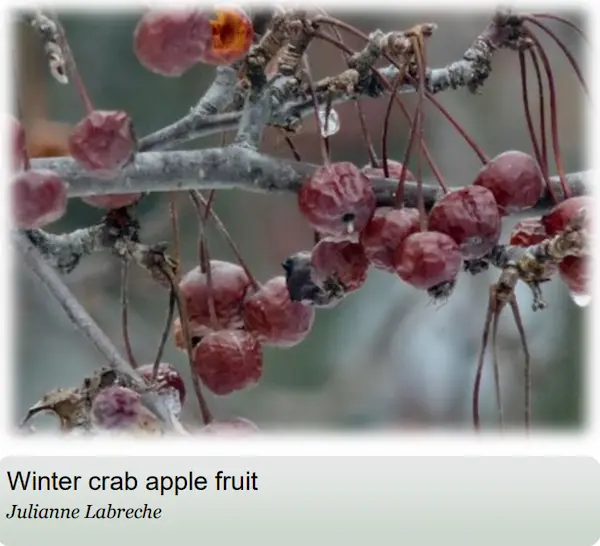Your cart is currently empty!
Building a Seed Growing Light Stand
You can construct a seed growing light stand or modify an inexpensive shelving unit. Take into account light, air currents and growth space
Your cart is currently empty!
Author: Julianne Labreche, Master Gardeners of Ottawa-Carleton.
Three species of woodpeckers visit my well-wooded, older suburb. Usually, they are most noticeable during mating season with their loud drumming sounds to attract a mate. The smallest is the downy woodpecker, about 16.5 cm long, which often forages in the old apple tree. The hairy woodpecker, about the size of a robin, also visits from time to time. This larger bird uses its longish bill to chisel out dead wood, looking for insects. The male of both of these species of woodpeckers has a distinctive red patch at the back of its head.

The pileated woodpecker, with a flaming-red crest, is about the size of a crow. This bird does not visit. my garden often, but sometimes can be heard drumming loudly from a nearby telephone pole. Generally, woodpeckers feel most at home in well-established neighbourhoods with mature trees where they can build cavity nests and find food. Leaving a snag, or dead tree, wherever it is safe on your property, can provide additional nesting and feeding opportunities for woodpeckers, as well as many other kinds of birds and wildlife.
Woodpeckers are visitors to my backyard feeder too, consuming suet, sunflower seeds, peanuts, and mealworms. In the wild, they like fruits and nuts, although insects are the main part of their diet. To attract woodpeckers to your garden, the following native plants are useful:
Native oaks are large, deciduous trees that provide abundant food for wildlife—acorns, as well as many species of insects that dwell among their leaves and branches. These trees also provide opportunities for nesting sites. Oaks prefer full sun and will grow in different soil conditions, including sand, clay, and coarse loam, but prefer well-drained soil. Oaks are one of the most beneficial trees for wildlife because of the biodiversity of life that they support.
Crabapple trees provide beautiful bursts of pink flowers in spring and abundant food for birds in the winter and early spring months. If you are selecting a crabapple for your garden, be sure that it is one that hangs onto its fruit in winter. As well as woodpeckers, many other birds, such as warblers, jays and cardinals, will consume its dried, shriveled fruit.

This deciduous native vine is fast-growing and, therefore, may occasionally need to be pruned back. Its spring flowers attract insect pollinators, and its blue fruit in the fall provides food for woodpeckers and other birds. Its fall foliage is lovely, turning a vibrant red. It grows in full sun, partial shade and shade and prefers medium, moist, well-drained soil.
If you are looking for a guide to local native plants that will provide habitat and food for wild birds, a useful reference for any gardener is the Birds Canada website at: https://birdgardens.ca/. Just type in your postal code or address, and a list of bird-friendly plants will appear. However, keep in mind that what you plant should be based on the plant’s soil, light, and space requirements. And here is another article for further reading on berries for birds.
You can construct a seed growing light stand or modify an inexpensive shelving unit. Take into account light, air currents and growth space
Discover how to nurture Nest Spruce in cold, dry regions for vibrant growth in harsh winters. Tips from Nikka Yuko Japanese Garden in Lethbridge.
When planting tomato seeds, I make sure that they are in contact with the soil, pressing them gently and sprinkling soil over them to cover.
Apartment plants are a great way to add some green to any space, and they’re not as hard to maintain as you might think.
Types of shrubs, there are two. Evergreen shrubs have year-round leaves. Deciduous bushes lose their leaves in the winter. We present ideas.
GardeningCalendar.ca gets some funding from advertisers. If you click on links and advertisements at no cost to you, the site may receive a small commission that helps fund its operation.
© 2025 J&S Calendars Ltd.
Leave a Reply
You must be logged in to post a comment.